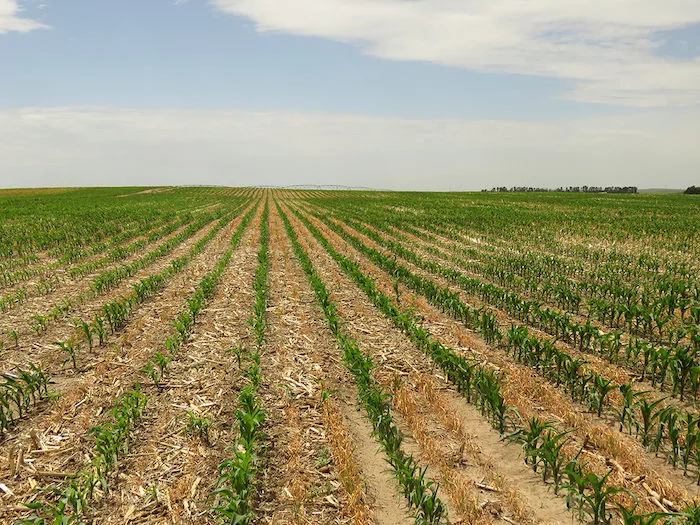By Elizabeth Hodges
Farmer Jon Walz from Stapleton, Neb., was looking for ways to cut input costs and be a better steward of the environment.
One way that he found that he could do this was by reducing fertilizer usage by applying the fertilizer in specific areas where the crops need it the most. Walz was one of 35 producers involved in the Precision Nitrogen Project at the University of Nebraska-Lincoln, funded by a USDA Natural Resources Conservation Service Conservation Innovation Grant evaluating various technologies to improve nitrogen use efficiency.
Background of Walz Farms
Walz Farms LLC is a cow/calf and row crop operation that intensely manages a cover crop rotation. Some cover crops they have used include small grains that they then graze their cattle on, which decreases feed costs.
“On our operation, we try to use what we need, not just putting stuff on because we can,” Walz said.
This is what pushed Walz Farms to really hone in on how they can decrease nitrogen inputs. Walz Farms wants to focus on getting the most profit per acre, not just the most yield.

Nitrogen Sensor and Model Study
Walz’s study evaluated two different tools: a Trimble GreenSeeker crop sensor that is mounted on a high-clearance applicator to assess the in-season crop nitrogen (N) need in real-time, and Granular Insights by Corteva, a crop model-based decision support system that integrates management, weather and soils information to assess N fertilizer needs.
He compared these approaches to his traditional N management, which utilizes a variable-rate application and split-N approach.
Both Trimble GreenSeeker and Corteva Granular utilized a site-specific, variable rate approach to make N recommendations for in-season applications. By using a site-specific approach, the producers are better able to match the crop needs for that area and reduce N losses.
The total N utilized for each treatment evaluated were as follows:
- Grower management, 186 pounds of N per acre.
- Sensor-based management, 188 pounds of N per acre.
- Granular management, 220 pounds of N per acre.
The total N rate for granular management was significantly more than the grower’s management, while the sensor-based management was similar to the grower’s management. There were no differences between the yields of all three of these tests. The greatest nitrogen use efficiency was realized for the grower’s traditional management and the sensor-based management.
Using These Results
Even though these results might not be earth-shattering, Walz sees them as an opportunity to play with profit per acre and make some more changes with equipment. When this first study was done, part of the field had been hit by hail, so that was a factor that would have impacted the results. Looking towards the future, he is doing this study again on a field that is in its second year of corn.
Walz said he has learned that good areas of the field don’t need as much nitrogen and the rough areas will need a little bit more, and these technologies can help him find those areas.
“It is all about right time, right place and right product,” Walz said.
Future analysis of the data will look at how the tools performed in specific soil types and management zones within the field.
On-Farm Research Helps Reach Goals
“Someone once told me that most ag companies spend 5% of their income on research and development, so I felt like I should be testing for myself instead of trusting all that they say,” Walz said. “There are new minds that will think differently when they are invited to help research something you want to improve.”
The Nebraska On-Farm Research Network has helped Walz reach goals of the operation by reducing inputs while not costing the farm long term. The results give Walz confidence that he is doing it right. Walz Farms' long-term next step is to close the gap of the synthetic fertilizer loop. He would like to see less fertilizers imported and with the help of new technologies, this might be possible.



![[Technology Corner] A Big Step Forward for Interoperability & Data Sharing](https://www.precisionfarmingdealer.com/ext/resources/2025/12/12/A-Big-Step-Forward-for-Interoperability--Data-Sharing.webp?height=290&t=1765565632&width=400)


